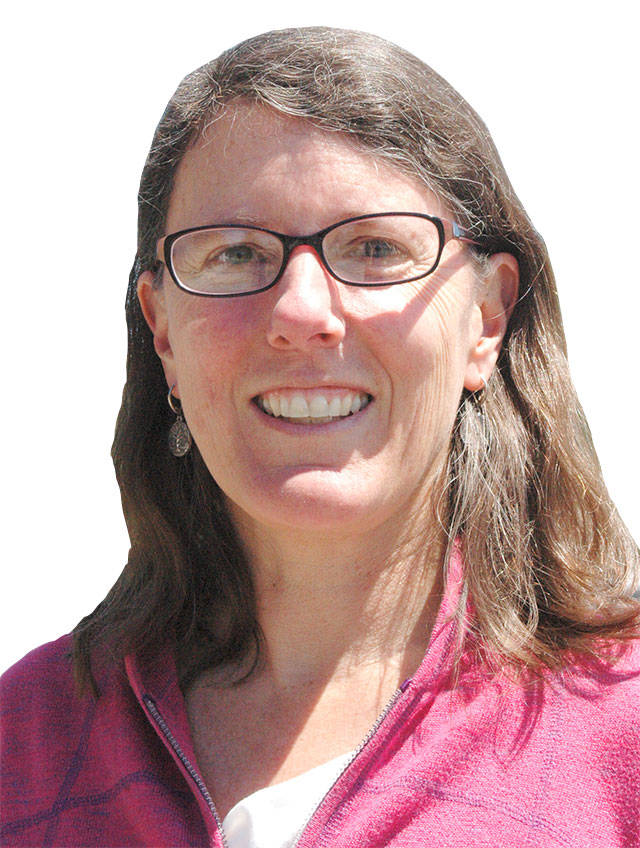Explore ‘Science Rising’
Science Rising will be free and open to the public, held April 22 on the Port Angeles City Pier, with demonstrations and more than 25 educational booths from noon-4 p.m. Nine short presentations on locally relevant science will be presented in the conference room of The Landing Mall (second floor), next door to the Pier, between 10 a.m.-3:30 p.m. and the adjacent OCNMS “Discovery Room” will be open for visitors. Dr. Charles Brandt will give the closing keynote address for the event on the Pier at 3:30 p.m. The event is hosted by Olympic Climate Action and the Feiro Marine Life Center.
By default I suspect, readers of this publication have great affection for this place and are very aware of its uniquely rich qualities.
But it might not be widely known that the North Olympic Peninsula also is rich in scientists!
So much so that a group of volunteers were inspired to celebrate the scientists and good science happening here this coming Saturday (Earth Day) to coincide with the national “March for Science” in Washington, D.C., Seattle, and elsewhere. They got a very positive response when calling on local career scientists to participate — provided the satellite “march” was not going to involve a protest.
Subtly dubbed “Science Rising” (see box below), event planners are inviting visitors to “Geek Out” over educational activities and talks and are building a — also subtly named — “Wall of Science” made up of single-sheet descriptions of the regular folks directly using science in their work in this place we live.
They’ve got a point and it’s worth celebrating.
Last week after a meeting at the Pacific Northwest National Laboratory’s marine sciences lab (PNNL, also locally known as Battelle), I got in on a rare tour of the “wet lab” and some of the research conducted there by chemists, physicists and biologists of various specialties. It’s “wet” because sea water, filtered and unfiltered, is piped in straight from Sequim Bay for experiments in large tanks.
Among clams, sea cucumbers and eelgrass, it’s a little odd to wear a security badge verifying one’s identity, but as a national Department of Energy facility, that’s how it is at PNNL. The director, Dr. Charles Brandt, is both an academic (adjunct faculty at WSU) and a business manager (formerly managed PNNL’s $20 million portfolio in environmental sustainability).
Several Battelle scientists will be participating in Science Rising and Dr. Brandt is giving the keynote closing address. On this Earth Day and this occasion, I can’t wait to hear what he has to say.
Other local institutions include of course Olympic National Park. Headquartered in Port Angeles, the park’s many field biologists, geologists and archaeologists are responsible for monitoring conditions and protecting the unique flora and fauna from the heights of Mount Olympus to beaches and headlands on the Pacific Coast.
Also based in Port Angeles, the Olympic Coast National Marine Sanctuary staff includes marine biologists, underwater geographers and others. The sanctuary extends off the coast from Cape Flattery almost to Grays Harbor and is protected largely for its extraordinary marine life thanks to upwelling from the depths farther offshore.
The list of local science geeks goes on. (Full disclosure: I’m involved in this event on Saturday.) Almost all federal agencies, tribes, state and local governments and districts employ scientists to manage public resources including our forests, water, salmon and shellfish, minerals, cultural artifacts, shorelines and more.
And because you can’t manage what you don’t measure, field science and monitoring is a common activity.
To say the above lists partially represent our scientific neighbors is a gross understatement. All of the above are assisted by data management, statistics and computer science specialists in addition to educators who help translate and disseminate what is learned.
Science is one of four components of “STEM” (Science, Technology, Engineering and Math), the new way of describing technical side of life and living — and it’s definitely rising.
STEM is truly everywhere. Governmental entities as well as big companies like Nippon and Green Crow, small companies like High Energy Metals, our police and fire departments, our Border Patrol and Coast Guard, agriculture, development, and nonprofits like the Feiro Marine Life Center and the North Olympic Land Trust. I could fill the page …
Think doctors, nurses, engineers, teachers, computer programmers, surveyors, architects, lavender distillers, farmers, cooks, gardeners, accountants — all use science and math directly every day in their life and their work. They all live here and we are particularly rich.
That a wall will be built with resumés and the expertise of our scientific neighbors is a wonderful premise. Brick by brick, this wall will be formidable against our common enemies, ignorance and apathy.
Science education may be the silver bullet. And science exactly the wall we need.
Geek Moment
For the 2017 water year (started Oct. 1), on April 17:
• In Sequim, cumulative rainfall = 12 inches (shocking, this is barely above normal)
• At the SNOTEL station (elevation 4,000 feet), snowpack = 15 inches; snow water equivalent = ? inches (missing data, but recent graph shows it’s no longer above average). Days/nights below freezing = 27
• Dungeness River at Mile 11.8, flow = 350 cfs. Bell Creek flow at North Blake Avenue = about 0.5 cfs; at the mouth (Schmuck Road) = 2-3 cfs (1 cfs is just under 650,000 gallons per day)
Ann Soule is a hydrogeologist immersed in the Dungeness watershed since 1990, now resource manager for City of Sequim. Reach her at columnists@sequimgazette.com or via her blog @watercolumnsite.wordpress.com.



